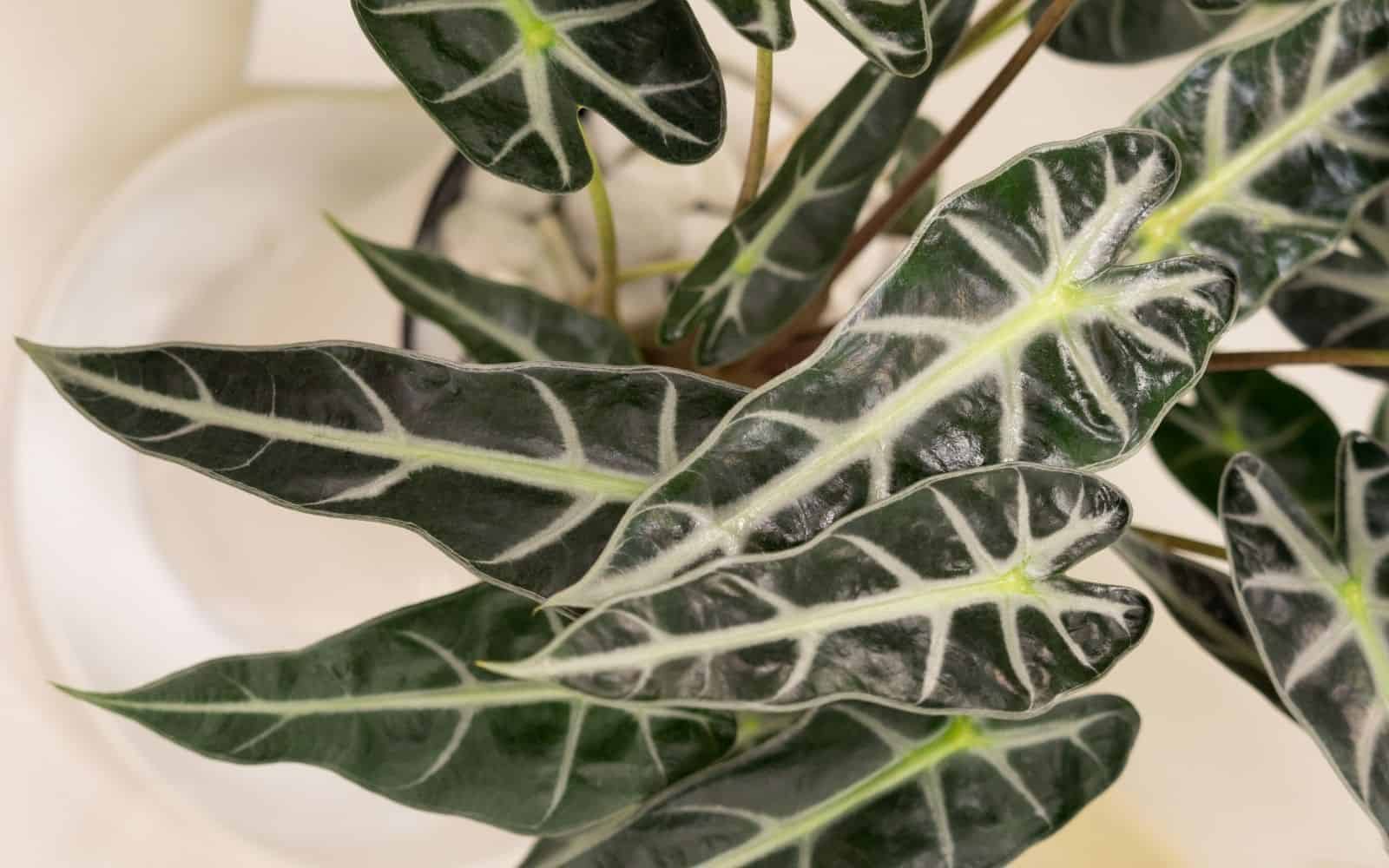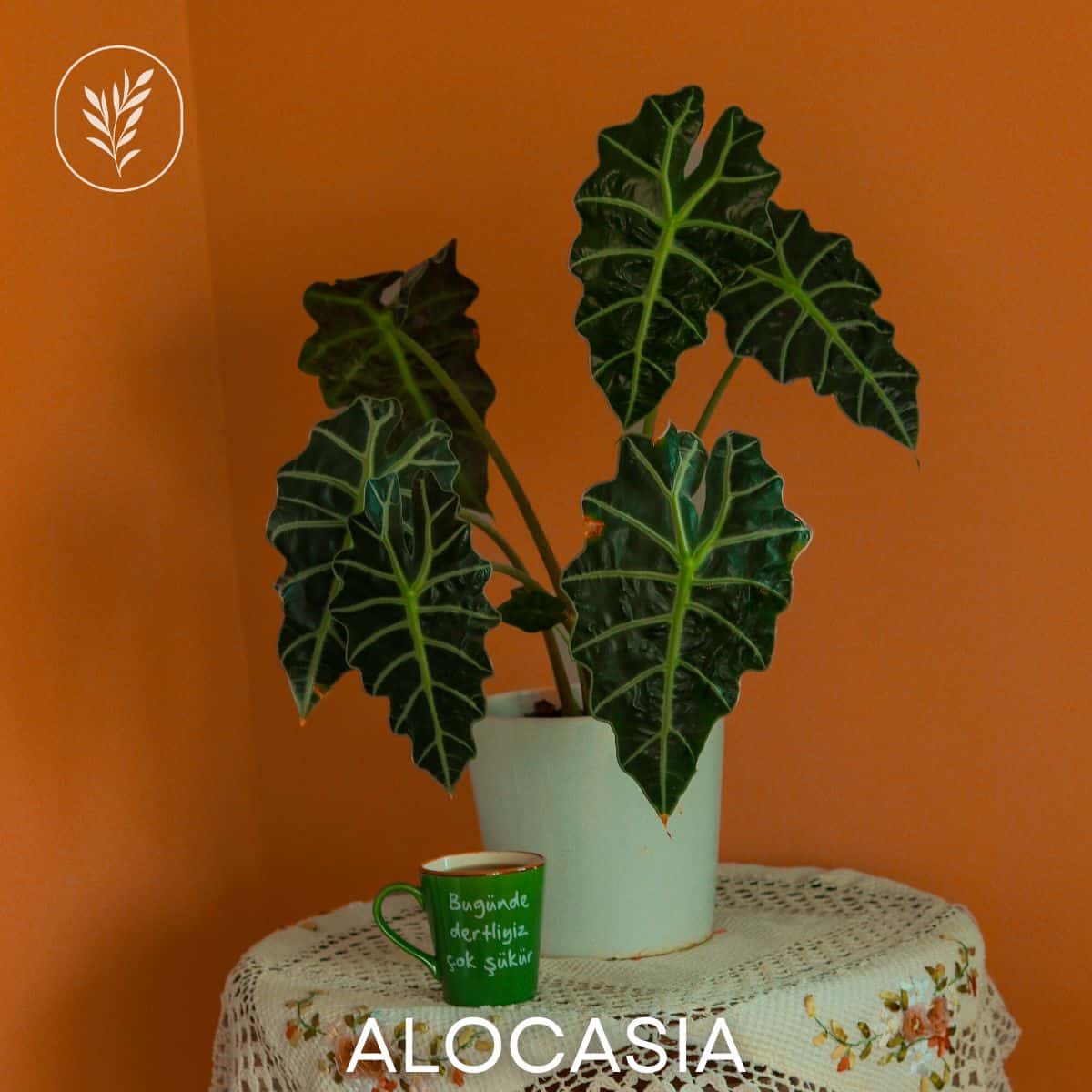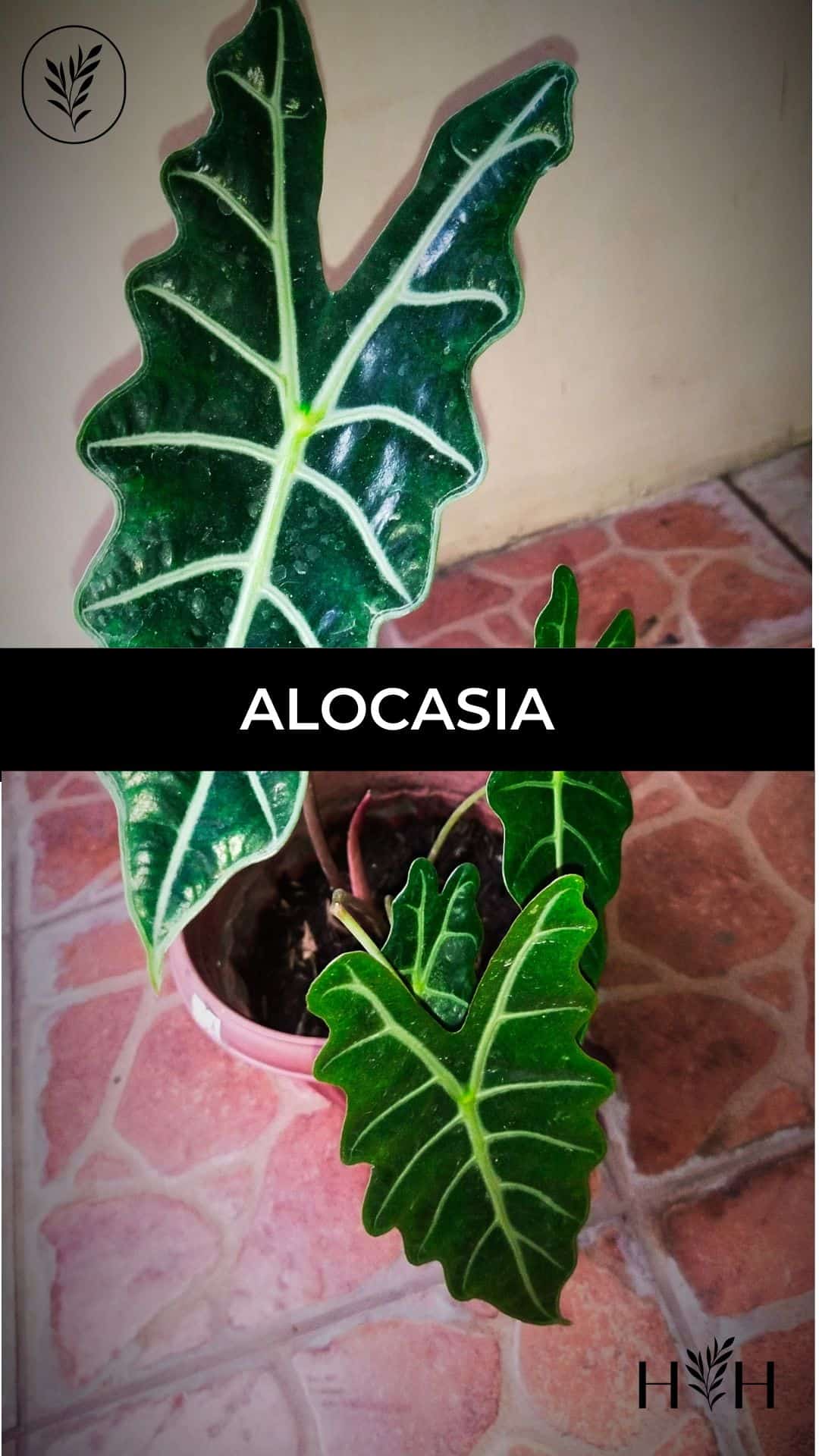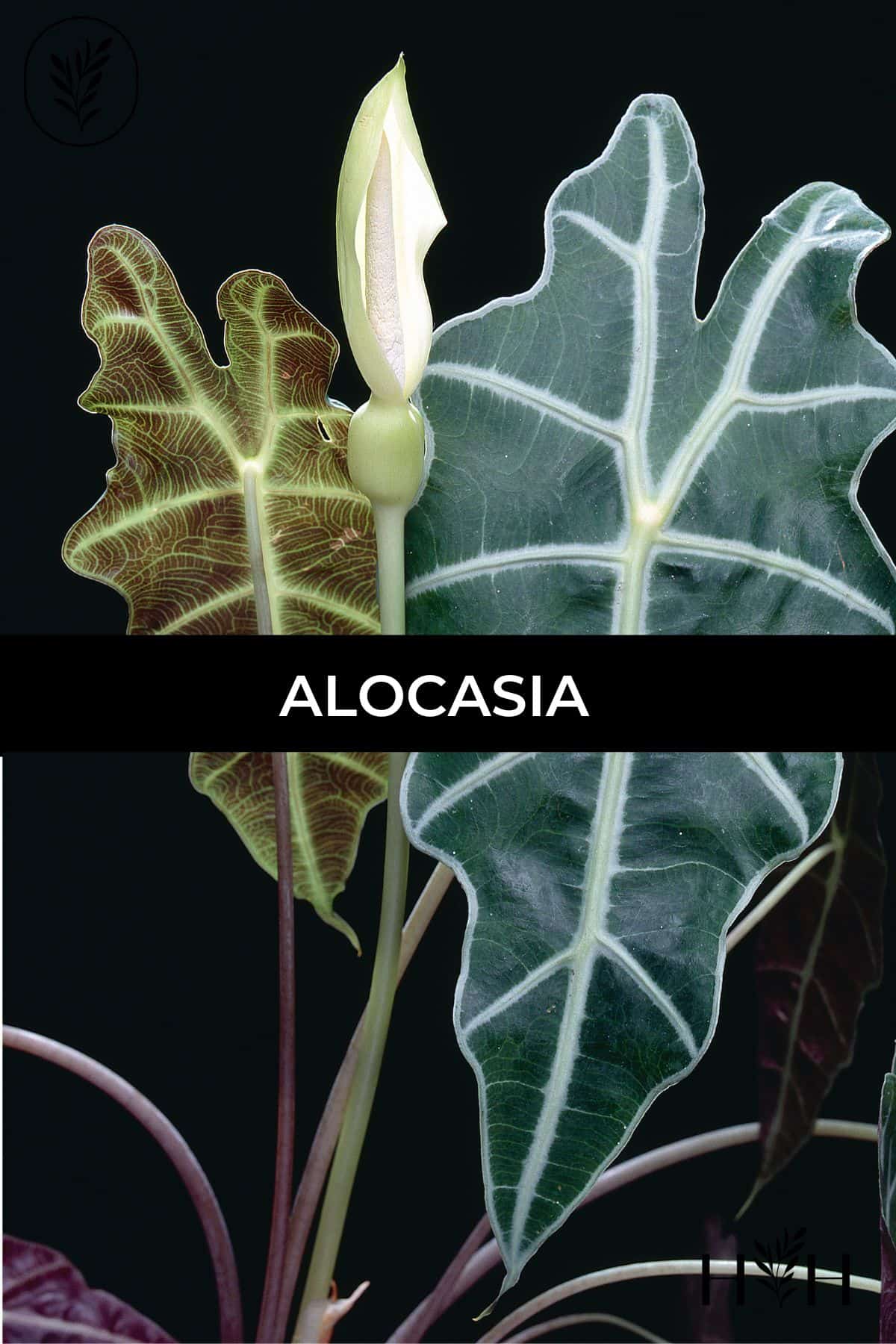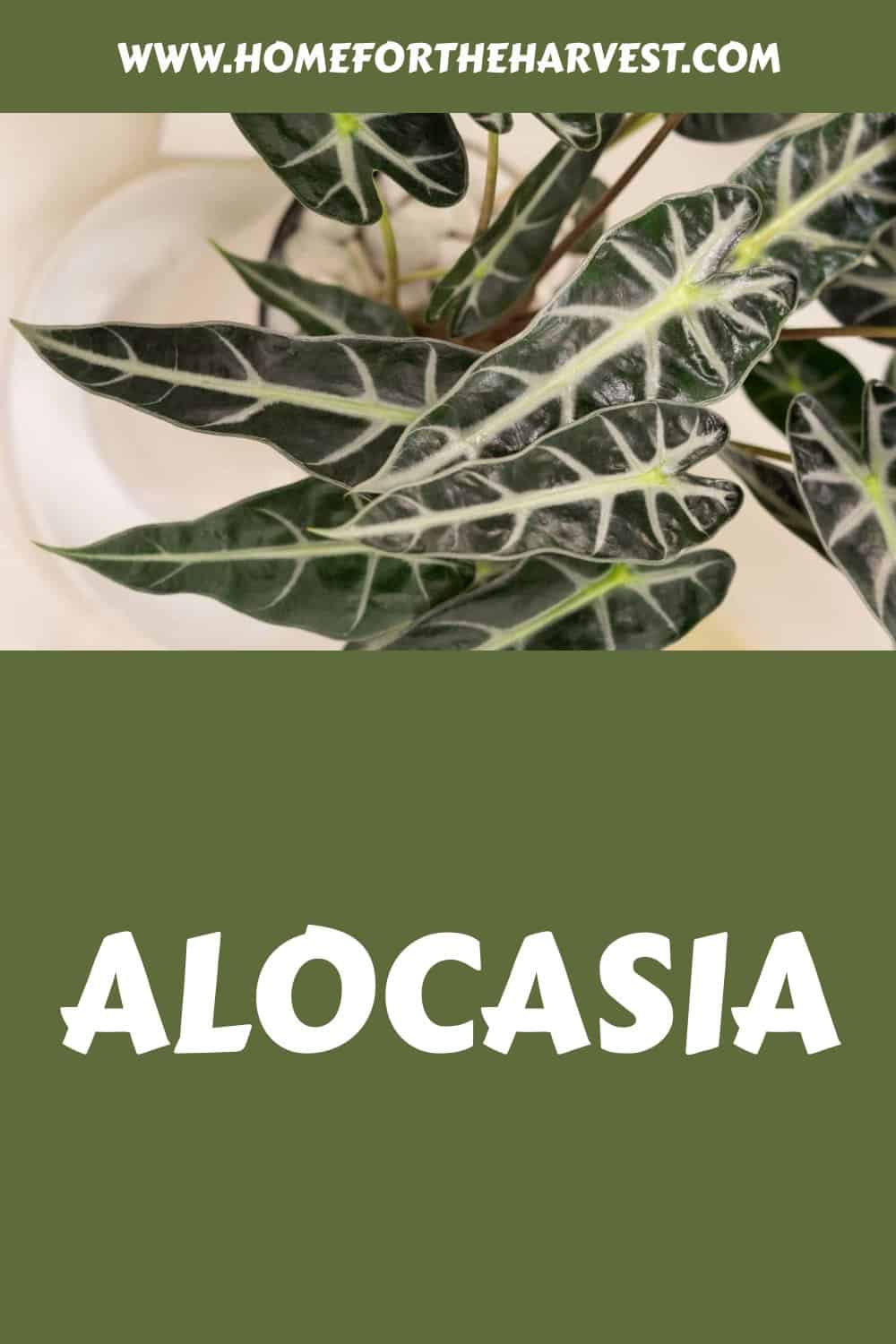Of the vast variety of available houseplants, the tropicals are often most beautiful. Natively dwelling on the forest floor below large canopies, their leaves are often wide and vivid, the perfect receptacles for absorbing sunlight. The Alocasia is no different; with over 90 different species that are all different in shape and appearance, the Alocasia makes a gorgeous addition to any household or plant collection.
Alocasia is a tropical plant from the Araceae family native to Asia and Eastern Australia. With broad, uniquely striking leaves shaped like fans, this plant prefers humid conditions, moderate watering, and filtered sunlight. There are almost a hundred different species of Alocasia, plus countless hybrids and cultivars.
While the Alocasia is not overly fussy as far as houseplants go, it can grow and subsequently deteriorate quickly, which is why it is crucial that you know how to care for it. In this article, we will cover basic care, popular varieties, light requirements, watering tips, common pests and repotting.
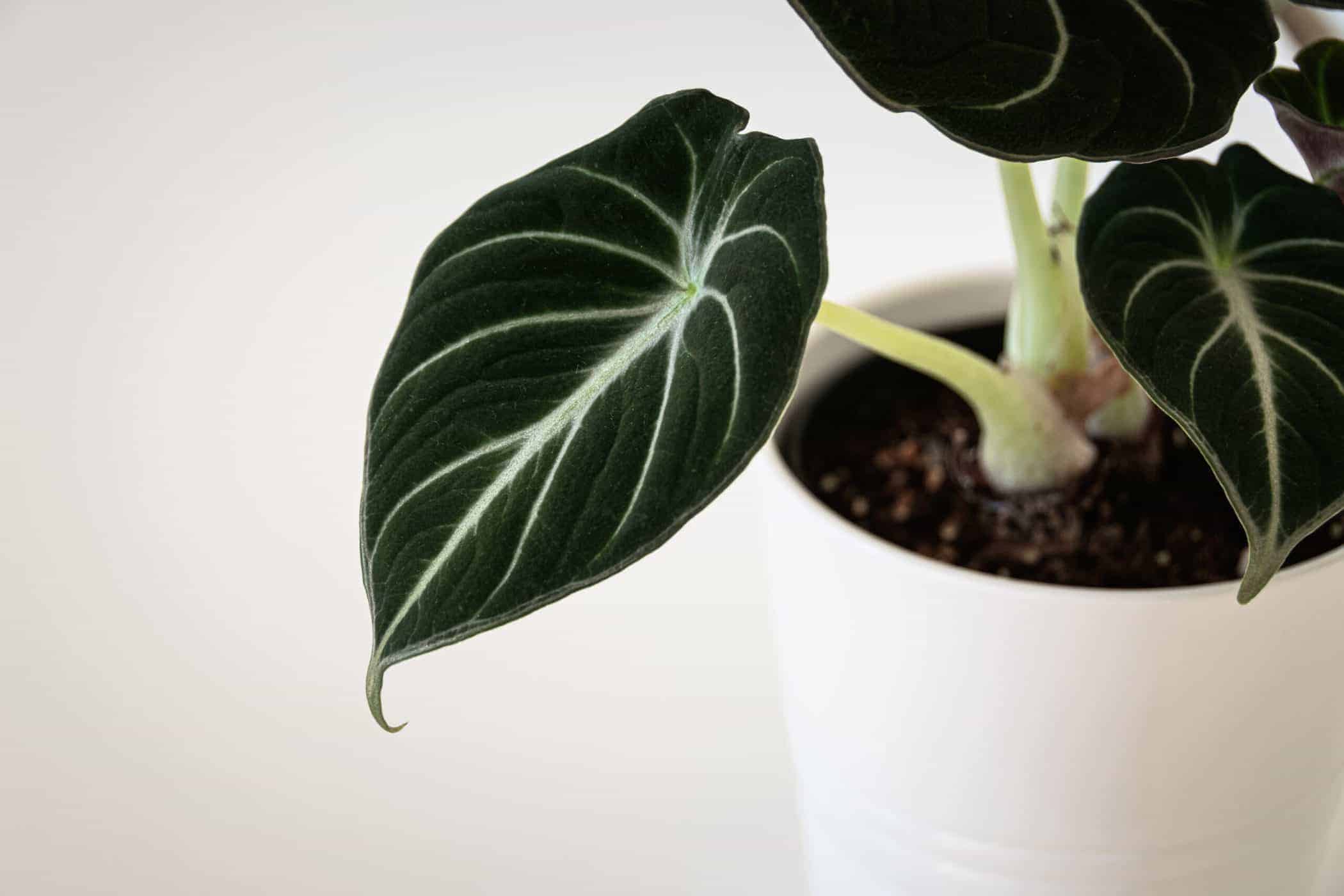
Alocasia plant basics
Alocasia is a broad-leaved member of the Araceae family. This is a plant family that is known for its tuberous herbs and milky sap. The Alocasia thrives in areas of high humidity, making a brightly-lit bathroom a perfect choice for this plant. Be careful about overwatering, though. While the Alocasia thrives in moisture-rich air, it won’t thank you for watering it more than once a week.
Another thing to know about Alocasia is that there are 96 accepted species under this name, and botanists are continually creating additional hybrid types. Some of these plants have leaves that can grow over three feet long!
Alocasia varieties
There are a lot of different varieties of Alocasia. Some of the most popular varieties include:
- Alocasia Amazonica Polly
- Black Velvet Alocasia
- Bambino Alocasia
- Quilted Dreams Alocasia
- Dragon Scale Alocasia
- Sarian Alocasia
- Frydek Alocasia
- Stingray Alocasia
- Reversa Alocasia
- Morocco Alocasia
- Wentii Alocasia
- Infernalis Alocasia
The ones that typically come to mind are the green, broad-leaved Amazonica, Frydek, and Bambino, with leaves shaped like diamonds. The Dragon Scale Alocasia is considered to be one of the most beautiful of the species, with unique multicolored leaves that look like the scales of a mythical creature.
Can’t decide which species of Alocasia to get? Don’t worry. Different species and/or hybrids of Alocasia can be potted side by side as long as they each have ample room to grow.
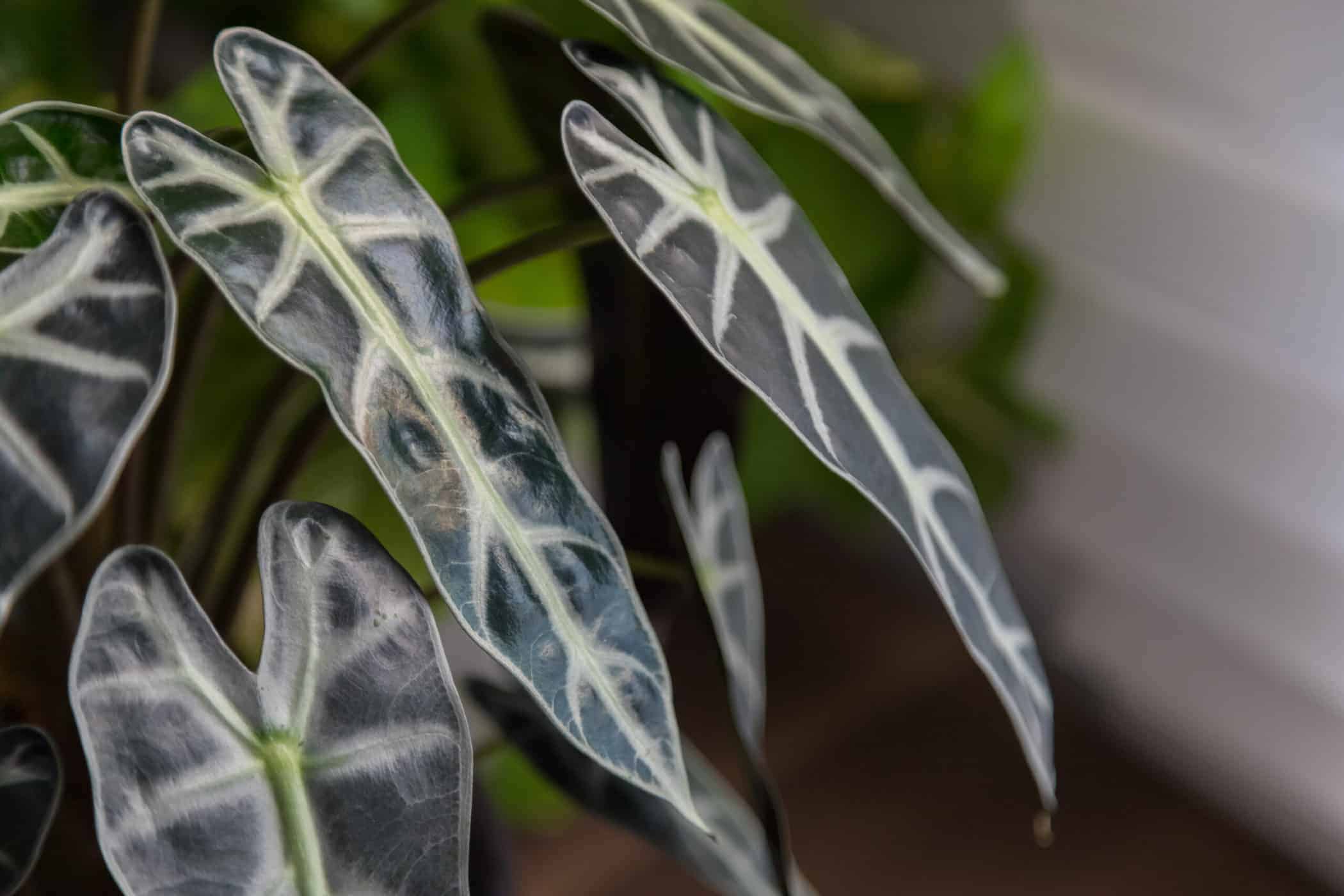
Light requirements for Alocasia
As a plant whose native environment is the forest floor, these plants thrive in bright, indirect light, which is the same type of light they would receive beneath a canopy of trees. The leaves can burn when placed in direct sunlight, but they don’t like an excess of shade, either.
Be sure to keep your Alocasia in a place that receives frequent, indirect light, such as a table next to a window. If you have a window in the bathroom that gets ample light, this is one of the best places for your Alocasia.
Alocasia grown indoors will likely benefit from supplemental lighting in all but the brightest homes. LED plant lights have dropped a lot in price, and can be a very good investment for most indoor plants.
Temperature requirements for Alocasia
Alocasia is not too picky about temperature, but it does favor warmer temperatures over the cold. It will thrive in temperatures between 65 to 85 degrees Fahrenheit. Alocasia should be kept away from drafts and heating vents, as these abrupt changes in temperature will upset the plant’s growth. It is also sensitive to frost.
Alocasia watering tips
Alocasia prefers soil that is moist but not wet, and watering once a week should create this result. In the winter, they prefer drier soil, so watering no more than once every two or three weeks is a good standard.
To make up for this infrequent watering, these plants should be misted frequently (at least once a week on both sides of the leaves). In the winter, this misting should rise to twice a week. If the edges of the leaves turn brown and crinkly, you will know that you need to increase humidity levels.
Alocasia plant fertilizer
This plant is not the type that likes to be left alone. During the prime growing seasons of spring through fall, it needs to be fertilized about once a month (depending upon which type and brand of fertilizer you use). Don’t worry about fertilizing in the winter as growth will naturally slow during this time.
Humidity levels for Alocasia
It is imperative that you keep the environment around your Alocasia humid. There are a few ways to do this. One is to place your plant in a tray with pebbles and water. A much more effective solution is to use a humidifier. You can use a regular ultrasonic mist humidifier or opt for a specialty humidifier from a plant store. Another common solution is to group your plants because they release moisture through their leaves, or to keep the plants in a bathroom that has a shower.
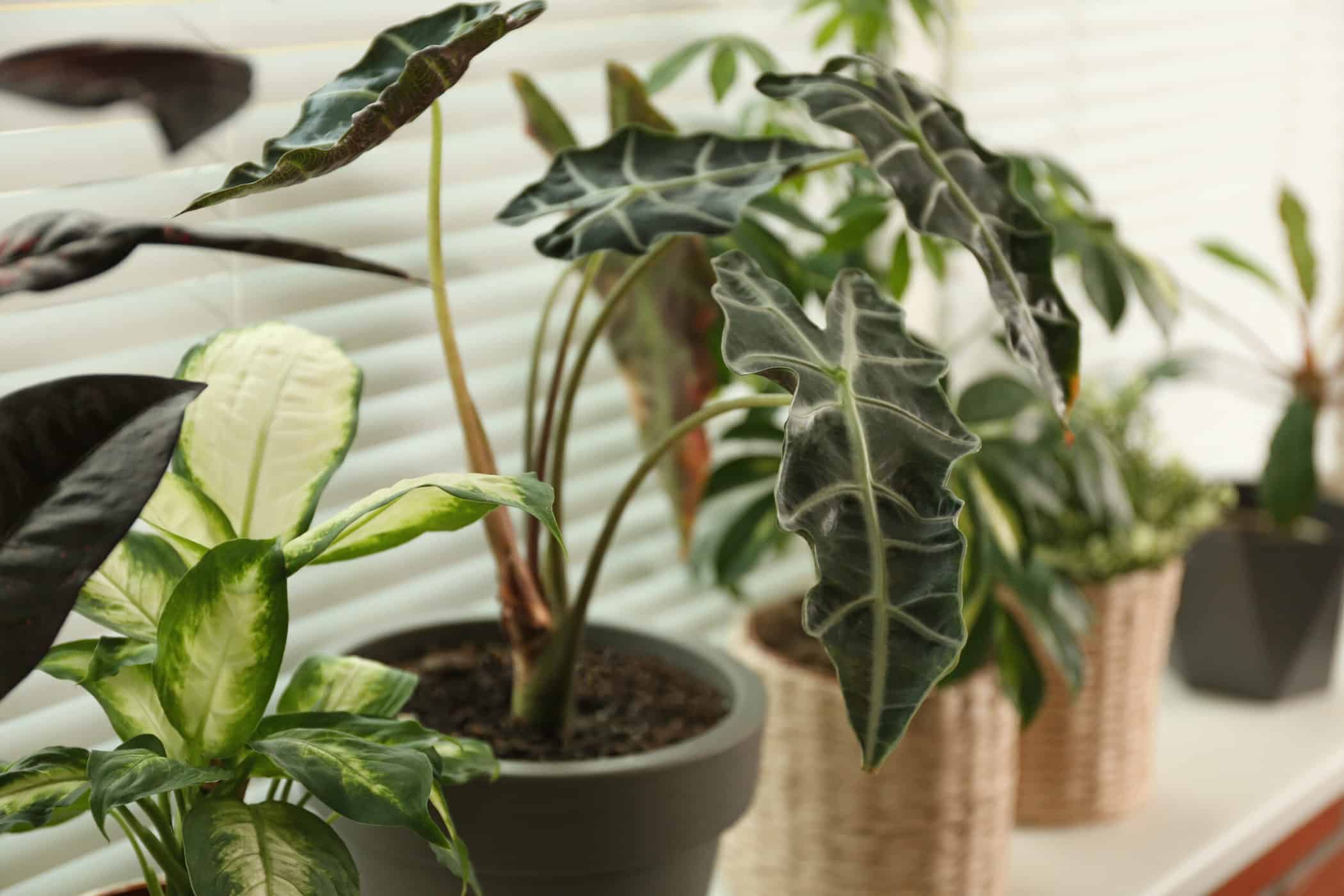
Potting mix for Alocasia
Alocasia is a bit picky about its potting soil. For optimal growth, it prefers one part soil, one part perlite/coarse potting sand, and one part peat. The key is to use well-draining soil that also maintains some moisture.
Planter pots for Alocasia
Alocasia is notorious for growing quickly when happy. The plants require a large pot to grow to full size. Go up in pot size by about 2″ in diameter each time. These plants should usually be repotted every 12 to 18 months, and replaced with new soil each time.
Common pests & diseases affecting Alocasia
If you despise insects with a vengeance, we advise that you steer clear of the Alocasia. This plant is very prone to spider mites. By no means is this an unsolvable problem, however. These bugs hate moisture, so keeping your leaves misted and the air humid is crucial to dealing with them.
If your Alocasia contracts spider mites, be sure to isolate it from your other plants immediately. Wash the leaves and stems with soapy water, then wipe them down with Neem oil. You can also treat the entire plant with an organic insecticide. Making sure your plant receives constant humidity is key to solving this issue.
Another common problem is droopy and spotty leaves. Droopy leaves result from over and under-watering, lack of nutrients, and pests like spider mites. Spots appearing on the leaves result from using water that is toxic to the plant, such as water containing an excess of minerals and chlorine. A way to solve this problem is to let water stand for 24 hours before watering, or, even better, use distilled water for your Alocasia.


